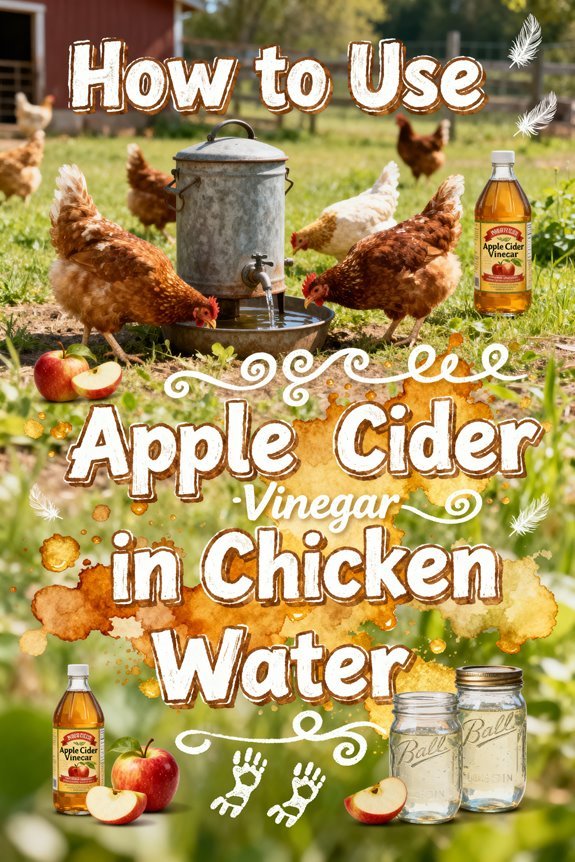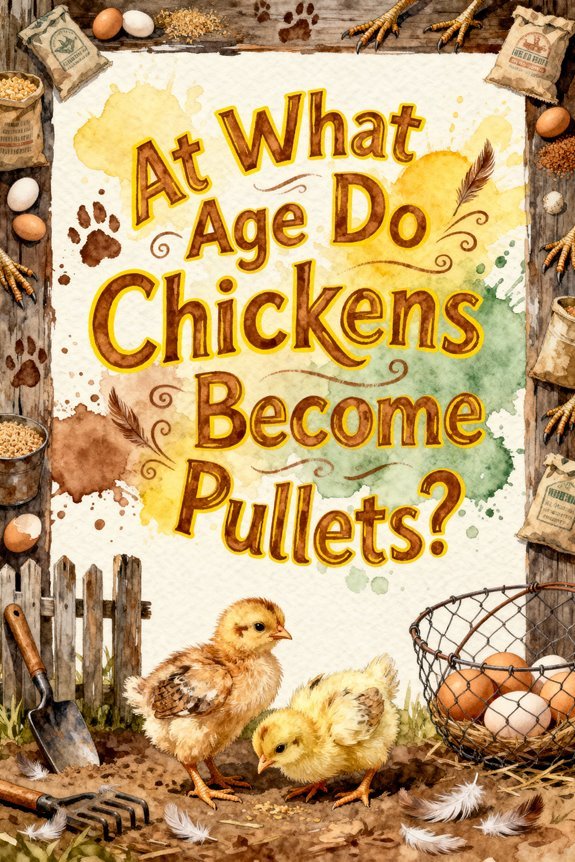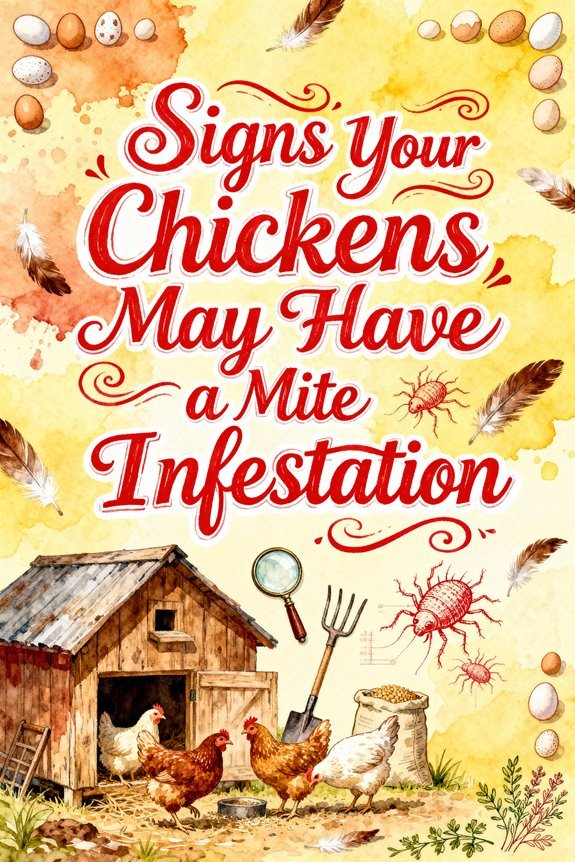Can Chickens Safely Eat Asparagus as Part of Their Diet?
You can safely feed asparagus to your chickens as a nutritious treat, offering it raw or lightly steamed in bite-sized pieces. The vegetable’s high mineral content supports stronger eggshells, while its prebiotics enhance gut health. Limit asparagus to 10% of their total diet and avoid feeding the toxic ferns. Though it may slightly alter egg flavor if overfed, asparagus provides essential vitamins and antioxidants that boost immune function. Understanding proper preparation and portions guarantees peak benefits for your flock.
The Health Benefits of Feeding Asparagus to Chickens
When considering the nutritional value of asparagus for chickens, research demonstrates several significant health benefits that make it an excellent dietary supplement. Your flock will benefit from asparagus’s rich mineral content, particularly its calcium and phosphorus ratios that support stronger eggshell formation. The vegetable’s prebiotic properties, including fructooligosaccharides and inulin, enhance gut health by promoting beneficial bacteria growth and improving nutrient absorption.
The high 94% water content in asparagus helps maintain proper hydration levels in chickens, which is especially crucial during hot weather. You’ll find that asparagus delivers essential antioxidants and vitamins A, C, and E, which boost immune function and reduce oxidative stress in your chickens. Just as tetracycline antibiotics help control respiratory infections, the antioxidants in asparagus support overall respiratory health. The nutritional benefits extend to improved meat quality through enhanced nutrient digestibility and favorable fatty acid profiles. Additionally, the dietary fiber content supports digestive health and facilitates better nutrient utilization throughout your chickens’ digestive system. Even feather footed breeds can safely consume asparagus without any concerns about it affecting their distinctive leg plumage.
Safe Ways to Prepare Asparagus for Your Flock
Since asparagus can be offered to chickens in multiple forms, proper preparation is essential for safe consumption. The most beneficial preparation techniques include serving raw asparagus, chopped into bite-sized pieces, or lightly steaming to soften tougher stalks. Remove woody bases and avoid feeding ferns, as they’re toxic to chickens.
Serving suggestions focus on maintaining food safety and preventing digestive issues. Don’t exceed 10% of their total diet with asparagus treats, and never add seasonings, oils, or spices. When using leftover asparagus from human meals, make sure it’s completely plain and free from additives. Monitor your flock when introducing asparagus to their diet, and always provide fresh water to aid digestion. A well-designed nesting box setup helps maintain cleanliness when distributing treats like asparagus. Keep portions small and manageable to prevent choking hazards. Raw asparagus provides chickens with essential vitamins A, C, E, and K to support their health. Consider mixing chopped asparagus into homemade flock blocks for added nutrition and enrichment during feeding time.
How Much Asparagus Should Chickens Eat
Establishing the right amount of asparagus for your chickens requires careful attention to nutritional balance and portion control. You’ll need to limit asparagus portions to no more than 10% of your flock’s total diet, offering it just once or twice weekly depending on your vegetable rotation schedule.
For ideal feeding frequency, cut asparagus into small, bite-sized pieces to prevent choking and aid digestion. You’ll find that cooked asparagus is easier for your chickens to process than raw stalks. Since asparagus contains fiber and phosphorus, it supports healthy bone development in chickens. A balanced diet should include layer feed as the main component of their daily nutrition. Treats and supplements should represent no more than 15% of their total food intake. Monitor your flock’s response when introducing asparagus, watching for signs of digestive issues. If you’re feeding multiple vegetables, restrict asparagus to once weekly; if it’s one of few treat options, you can offer it twice weekly. Remove any uneaten portions promptly to prevent spoilage.
Dangerous Parts of the Asparagus Plant
While edible asparagus stalks provide safe nutrition for chickens, other parts of the plant warrant caution. You’ll need to remove leaves and roots from edible asparagus before feeding, as these parts have unclear safety profiles and could pose risks.
Just as deep litter method helps protect chickens naturally in winter, keeping them away from harmful plants is essential for their wellbeing. The ornamental asparagus fern, often mistaken for edible asparagus, contains dangerous sapogenins and cardiac glycosides in all its parts, including berries and foliage. These compounds can cause dermatitis, heart irregularities, and potentially fatal reactions in chickens. Like with moldy or spoiled asparagus, severe digestive and respiratory issues can occur if chickens consume contaminated parts.
You must keep your flock away from asparagus fern plants entirely, as even minimal exposure can lead to severe symptoms like tremors, drooling, and cardiac distress. Just like foxglove plants, asparagus fern should be completely removed from areas where chickens roam. When feeding edible asparagus, stick exclusively to tender green stalks cut into appropriate sizes.
Impact on Egg Production and Taste
When feeding asparagus to laying hens, you’ll need to carefully monitor its effects on egg quality and production. While asparagus won’t reduce egg production rates, it can considerably alter egg flavor due to sulfur compounds from asparagusic acid metabolism. Low calorie spears make asparagus an ideal addition to a balanced chicken diet.
The vegetable’s nutritional benefits include vitamins A, C, E, K, and B-complex, along with prebiotic fibers that enhance nutrient digestibility. These components support hen health and may improve egg shell strength and yolk quality. However, you’ll need to manage portion sizes carefully, as excessive asparagus consumption can lead to sulfurous, off-tasting eggs.
To maintain peak egg flavor while leveraging asparagus’s nutritional benefits, feed it in moderation and mixed with other feed components. If you notice taste changes, reduce the amount until egg flavor returns to normal.
Asparagus Vs Other Common Chicken Treats
How does asparagus compare nutritionally to other common chicken treats? While potatoes and squash provide essential vitamins and minerals, asparagus nutrition stands out due to its extensive nutrient profile and prebiotic content. Unlike potatoes, which require cooking and contain toxic solanine when green, asparagus can be served raw or cooked without safety concerns. Much like automatic feeding systems, asparagus helps maintain healthy flock nutrition while reducing waste and maintenance needs. Just as raw green beans can be harmful to chickens due to their lectin content, careful treat selection is essential for flock health.
Asparagus offers superior digestibility benefits through its fructooligosaccharides and inulin, promoting beneficial gut bacteria growth more effectively than squash or potatoes. These prebiotics enhance nutrient absorption and improve chicken performance. Daily harvesting during peak season yields asparagus spears that grow up to 2 cm per hour. While chicken preferences may vary, asparagus provides a safer alternative to potentially harmful treats like rhubarb leaves. It’s particularly valuable for its combination of vitamins A, C, E, and K, plus minerals that support overall health without the risks associated with other common treats.




